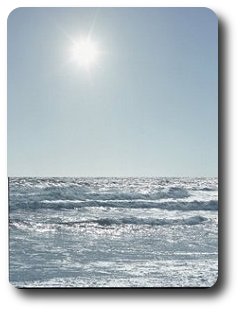 As the year draws to an end and a new decade kicks off, let’s have a look at some of the alternative energy facts that made the news in 2010.
As the year draws to an end and a new decade kicks off, let’s have a look at some of the alternative energy facts that made the news in 2010.
1 – Canada became home to the world’s largest solar photovoltaic plant. The announcement about the 80MW solar farm was made in October. Sarnia took the crown from 60MW Olmedilla PV Park in Spain and is expected to generate 120,000 MWh per year or enough power for 12,800 homes.
2 – The Mojave Desert became home to the country’s largest solar power project when US Secretary of the Interior Ken Salazar green-lighted the construction of Blythe Solar Power Project, a 7,025 acre project which will nearly double the country’s solar power output and provide electricity to the equivalent of 300,000 homes. On the negative side, concerns have been raised about the impact solar farms in Mojave will have on wildlife, particularly the desert tortoise, as well as aboriginal sacred sites.
3 – In December Abound Solar announced that it will build the U.S.’s largest next-generation cadmium telluride, thin-film photovoltaic solar module plant in the State of Indiana. The company leased a 781,750 square foot facility in Tipton to build the plant with a $400 million U.S. Department of Energy loan guarantee and $110 million equity investment.
4 – A report revealed that European countries steadily grew their use of renewable energy between 2006 and 2008. In total, alternative energy accounted for 10.3% of energy consumption in Europe. Sweden led the clean energy league with a whooping 44.4%.
5 – Australia, one of the world’s largest greenhouse gas emitters (16th place), also made a forward leap in terms of renewable energy adoption. In 2010 there were over 100,000 rooftop installations in the country, or more than the combined installations of the past ten years (81,232).
6 – 2010 wasn’t a very a good year for wind power in the United States. In fact, the CEO of the American Wind Industry Association (AWEA), Denise Bode, described the situation as ‘dismal’. New installed capacity fell to less than half the 2009 figure, which was 10GW.
7 – Geothermal was always in the news in 2010. In December Walgreens, the drugstore chain, announced that its store in Oak Park, Chicago would be the first to utilize geothermal energy for heating and cooling, reducing energy use by 46 per cent.
8 – Cellulosic ethanol (ethanol made from grass, wood and non-edible plants) also featured prominently, with more research being carried out in the field. Denmark became the first European country to make cellulosic ethanol available to drivers. Called Bio95, it is now sold from 100 filling stations across the country on a 95% gas, 5% biofuel blend. Bio95 is made from wheat straw collected after harvest in Denmark.
9 – Electric vehicles were big news in 2010. Commercial models were launched to much media fanfare (you heard of Nissan Leaf and Chevy Volt, right?) and General Electric announced it will purchase 25,000 EVs by 2015, thus converting half of its worldwide fleet of cars to electric power by that year.
10 – Emerging countries, especially China and India, are leading the way in clean energy investments, a 2010 report compiled by The Pew Charitable Trusts revealed. Alternative energy projects carried out by G-20 countries may reach $2.3 trillion by the end of the decade, according to data from Bloomberg New Energy Finance.
The Energy Refuge team wishes all of its readers and collaborators a very happy 2011. We hope to be seeing you here.






Good post and info. Thanks.
Renewable energy is the energy of future. Thank you for posting.